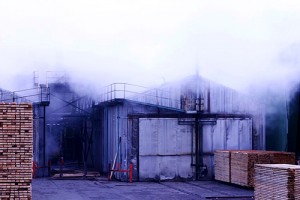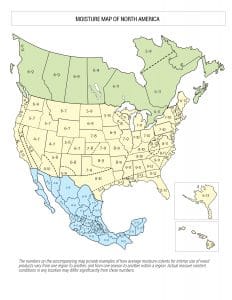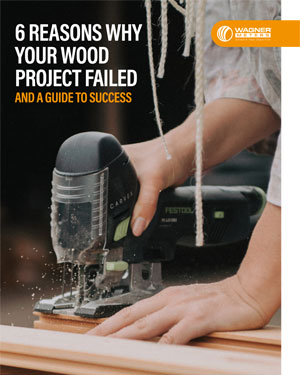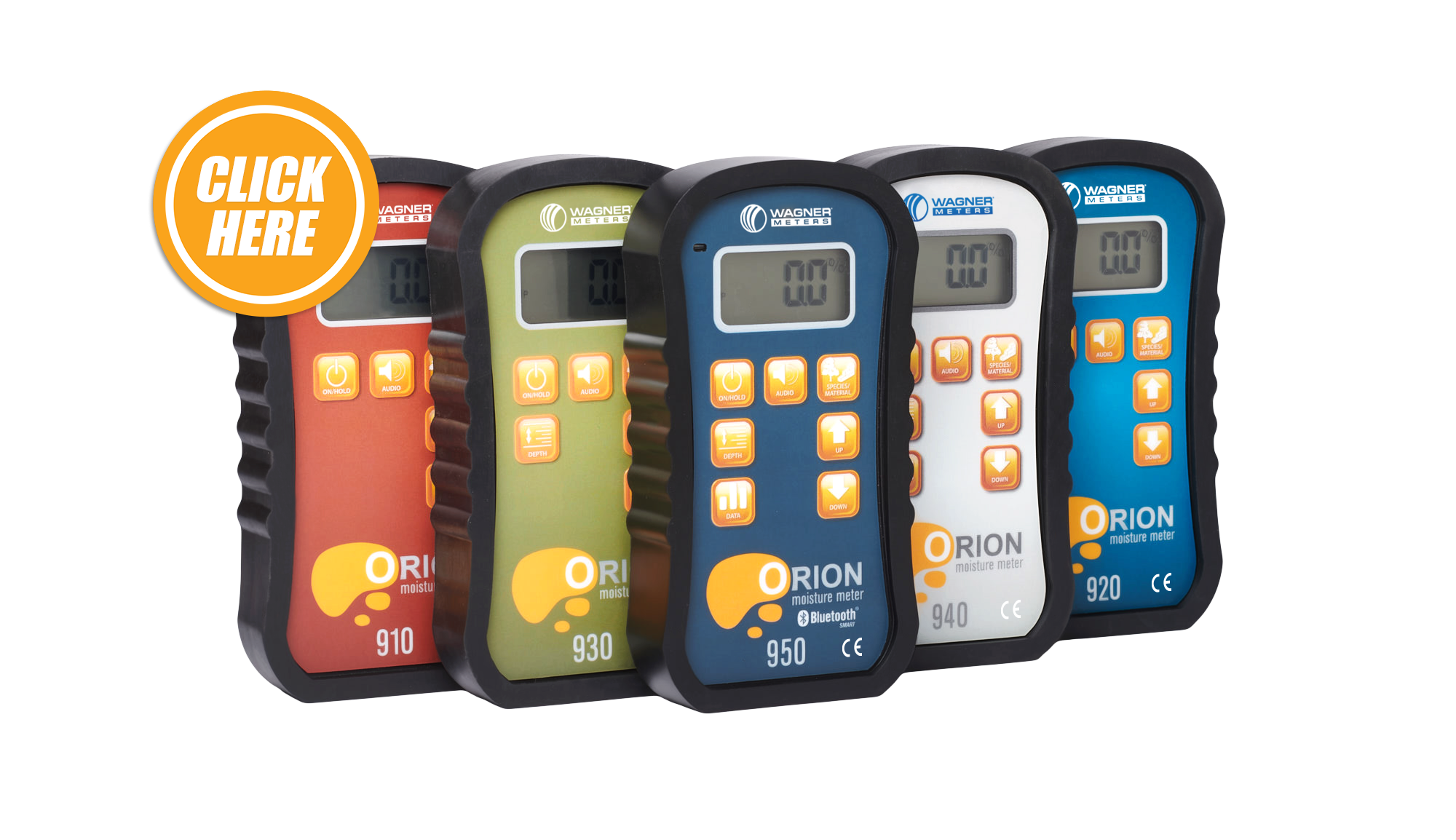Temperature and Wood Moisture Measurement
It is necessary to use moisture meters for wood to measure moisture content (MC) due to continual changes that occur in the relative humidity (RH) of a wood’s surrounding environment.
Wood absorbs moisture from its ambient environment when the RH rises, and when RH decreases wood releases moisture. However, the correlation between RH and the wood’s MC does not apply equally to the relationship between temperature and the wood’s MC if using a pin-style moisture meter. This is why a pin-style wood moisture meter reading is only as good as its ability to account for wood temperature.
Relative Humidity
 Lumber producers utilize control systems in their kiln drying process to lower the MC in freshly-cut (“green”) timber. Optimally, they dry the lumber to its optimum Equilibrium Moisture Content (EMC) target in order to balance the wood’s MC with its ambient environment. As any weather watcher can attest, the RH of our atmosphere is ever-changing. The air naturally holds varying proportions of moisture, and RH is the catalyst for those fluctuations.
Lumber producers utilize control systems in their kiln drying process to lower the MC in freshly-cut (“green”) timber. Optimally, they dry the lumber to its optimum Equilibrium Moisture Content (EMC) target in order to balance the wood’s MC with its ambient environment. As any weather watcher can attest, the RH of our atmosphere is ever-changing. The air naturally holds varying proportions of moisture, and RH is the catalyst for those fluctuations.
Wood usually does not shrink or swell in use except if its MC changes in some way. The MC of wood changes when the RH changes. Unfortunately, if the wood was at the wrong MC when initially put into use, it will adjust to achieve its EMC with its environment and therefore may shrink or swell initially quite a bit during this process.
When you consider changes in MC, think changes in RH.
Temperature
Temperature alone does not cause any significant size changes in wood. Heating does cause moisture changes to occur faster. When the air is heated, its RH drops unless moisture is added in some way.
For example, if it is 30 degrees Fahrenheit (F) outside with 100% RH (snowing), the EMC would be 28%.

If outside air is brought into a home and heated, the following EMC values will be seen:
- Heated to 40° F will result in 68% RH and 13% EMC
- Heated to 50° F will result in 47% RH and 9% EMC
- Heated to 60° F will result in 34% RH and 7% EMC
- Heated to 70° F will result in 24% RH and 5% EMC
In North America, most heated homes and offices will run at approximately a 6% EMC in the wintertime and 9% EMC in the summertime.
Temperature does dry out the moisture in the air (naturally). Without the addition of more humidity, the EMC of the wood will eventually change. To keep the wood’s EMC in balance during winter months, homeowners can add moisture to the air by installing a humidifier in the furnace, as an example.
Therefore, some changes in EMC can correlate to a degree with rising temperatures, but most changes are due to RH fluctuations brought about by the drying effect of the heat itself. When measuring wood moisture levels, ambient temperature is a minor source of influence compared to that of RH.
But what about the temperature of the wood itself?

Free Download – 6 Reasons Your Wood Project Failed
Moisture Meter Readings
 A pin-style wood moisture meter must be corrected for temperatures above or below 70 degrees F. This is to ensure those accurate MC readings are still obtained even when the wood temperature varies.
A pin-style wood moisture meter must be corrected for temperatures above or below 70 degrees F. This is to ensure those accurate MC readings are still obtained even when the wood temperature varies.
Wagner Meters produces a line of pin-less hand-held moisture meters for wood that do not require adjustments for most wood temperatures. Even frozen wood with an MC below 15 percent can be measured with minimal temperature concerns (it is recommended that people call Wagner Meters before measuring frozen woods with possible higher MCs).
Wagner Meters gives you the confidence to trust the accuracy of your MC readings regardless of wood temperature.
Remember the basic fundamentals to successfully manage your wood’s MC.
Larry Loffer is a senior technician at Wagner Meters, where he has over 30 years of experience in wood moisture measurement. With a degree in Computer Systems, Larry is involved in both hardware and software development of wood moisture measurement solutions.
Related Posts via Taxonomies
Last updated on December 7th, 2021




We have a home built wood drying kiln. I need a method of measuring RH and the temp inside the kiln. Open to product suggestions.
Thanks,
Coach
David,
I have a couple of questions:
1. What is the highest temperature of the kiln environment?
2. Are you wanting something that can give you the RH and Temp info on the outside of the kiln, so you don’t have to open the kiln up?
Can you recommend a significant study about woods in the field of physics? I am seriously in need Sir.
Hi Apollo,
Since wood is a common building material, there are many studies that discuss the physical strength properties. These can be shear strength as well as bending strength. Here is an example:
http://workshopcompanion.com/KnowHow/Design/Nature_of_Wood/3_Wood_Strength/3_Wood_Strength.htm
You should be able to find many strength articles, with formulas, on the internet.
I want to put epoxy on Doug Fir and it says that the temperature of the wood has to be 77 degrees do you make a meter or how can I check the temperature of the wood.
Hi Tim,
Yes, here is a link to our Infrared thermometer.
Just point it at the wood to get a temperature.
https://www.wagnermeters.com/shop/infrared-thermometer/
Thank you